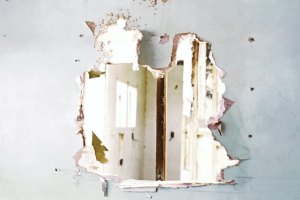There are many forms of plasterboard out there. One of the most common is foil backed. We want to have a closer look at these products today because it is one of the most interesting uses of foiling services. It shows how effective foils can be when you add them to sheet materials.
 Foil backing is employed as a vapour barrier for the sake of moisture control. This is something you might want to explore further if you’re doing home renovations and wish to lower the chances of damp occurring. If it is something you are worried about, foil backed plasterboard may be just the thing for you. It’s not difficult to install and you can use it to save money on heating costs. A downside is the plasterboard can be difficult to secure.
Foil backing is employed as a vapour barrier for the sake of moisture control. This is something you might want to explore further if you’re doing home renovations and wish to lower the chances of damp occurring. If it is something you are worried about, foil backed plasterboard may be just the thing for you. It’s not difficult to install and you can use it to save money on heating costs. A downside is the plasterboard can be difficult to secure.
There are so many variants of plasterboard out there that it can be hard to know which one would suit you best. To help, we’ve produced a guide on what you need to think about when shopping around. With these details, you will be able to make a proper decision.
The difference from regular boards
Foil backed sheets are the same as standard plasterboard. Only, there is a thin foil layer on the back of each board. It is great for use on ceiling linings and walls where an efficient vapour lining, together with a plasterboard lining, are necessary.
As we said, the foil works as a vapour barrier. It can stop moisture from penetrating through your boards. As a result, it can protect your home’s interior surfaces. If you need first class foiling services, make sure you contact us.
When to use them?
There are instances where using these boards is a decent idea.
Damp
One use is with damp walls that have recently undergone repairs. If a wall was damp, it might retain salt and moisture. Here, using a foil-backed board will stop the trapped moisture from seeping though to your interior surfaces. This is only appropriate for walls that you’ve effectively repaired; you should never use it for more serious concerns.
Penetrating damp
A vapour barrier is able to benefit exteriors vulnerable to future penetrating damp. Vapour control in these places will keep your wall safe because it reduces moisture movement through your building materials.
Solid walls
Condensation and penetrating damp can happen in solid walls lacking a cavity. This is particularly true if it’s exposed to driving rain on the exterior. A vapour barrier might be possible with either battens or a stud wall alongside foil-backed boards. There will be a cavity between the boards and wall too. This can work as an additional security layer.
Pitched roofs
If you are boarding your loft so you can use the space, these plasterboards can give you protection from moisture entering the roof. They are a very wise investment here, showing why foiling services can be great for your money.
Installation tips
Foil back plasterboard is only suitable for mechanical fixing. Utilise screws and attach to metal or timber stud work. Or, you can fix to timber battens on your wall.
The boards aren’t good for dot and dab either. The bond between the board and foil doesn’t have enough strength to support the weight. As a result, it is able to peel off over time.
The most straightforward approach is attaching treated timbers to your wall at 400mm intervals. This will enable you to mount the boards without needing to cut their width.
Our foiling services serve many purposes
At Foiling Services, the work we provide is suitable for both decorative and protective purposes. Our expertise and skill will ensure you get excellent results. The team also goes above and beyond to ensure that nothing goes wrong.
So, if your situation calls for foiling services, please let us know. We can give you advice, quotes, and more.
